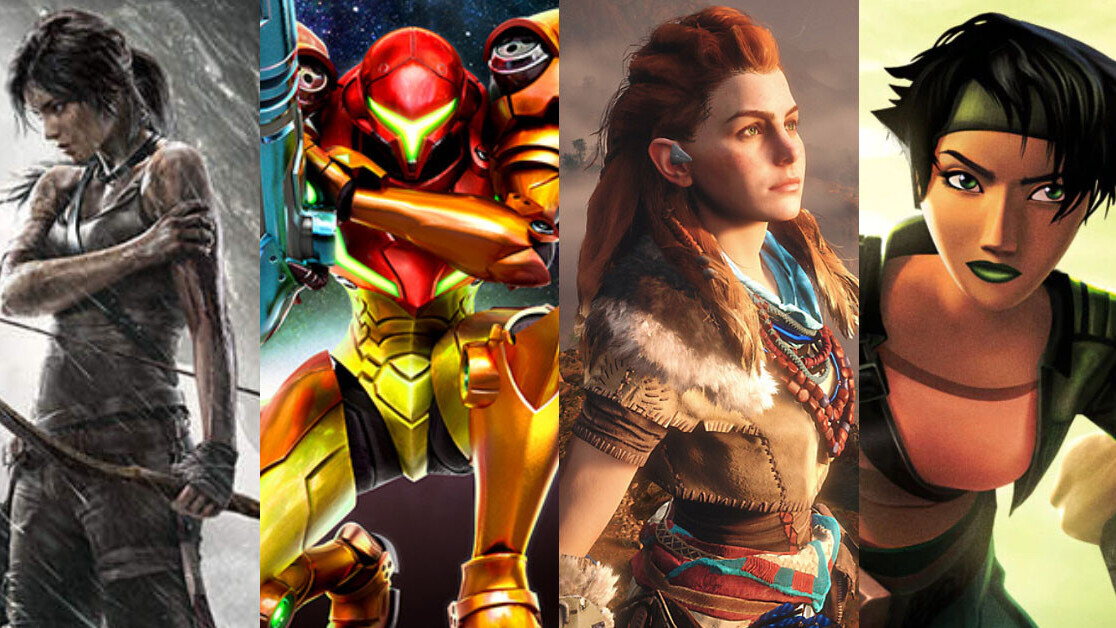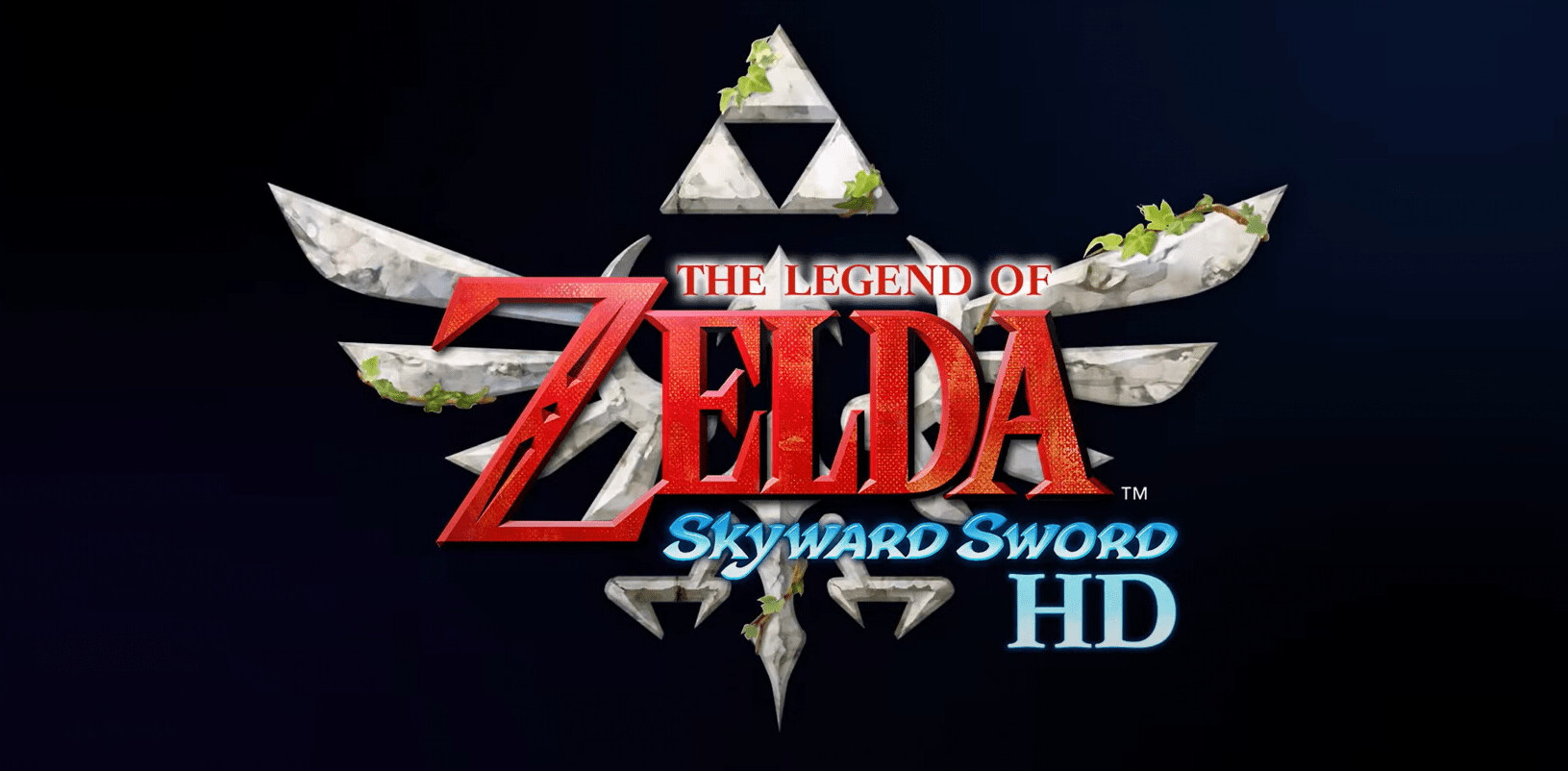
In 1986, a game was released called Metroid. A dark, challenging science fiction platformer which owed more than a little to the Gigerian horror of Alien, Metroid starred a bounty hunter named Samus Aran, outfitted from head to foot in power armor. At the end of the game, Samus would doff the massive orange-and-green armor, revealing long, flowing hair and a red bikini. For less than a minute, the player sees the outcome of one of Metroid’s directors saying, “Wouldn’t it be kind of cool if it turned out that this person inside the suit was a woman?”
Judging by the fact that, as of 2020, gamers are still eagerly awaiting Samus’ next adventure, it turns out the answer is: yes, it would be pretty cool.
Yet Samus was virtually on her own in 1986, holding up the banner for women in gaming like a veritable Atlas. Even now, while her cohort of female game protagonists is on the rise, it’s just not very common to put your hand into the metaphorical pool of new games and come away with a game led by a woman (and only a woman). Why is that?
A brief history of women leading games
Samus wasn’t the first woman to lead her own game — that honor belongs to Ms. Pac-Man most likely, though there are a smattering of lesser-known arcade games with women in prominent roles. The point is, female-led games were not particularly common, and the revelation that you were playing the gritty Metroid as a woman the whole time was nothing short of paradigm-shifting.
Note that I’m speaking specifically of the phenomenon of playing as a woman leading a game, with no option to do otherwise. Games like Alone in the Dark (1992) and Resident Evil (1996) offered you the option of playing as either a man or a woman, while fighting games of all stripes usually had at least one female character. But playing a game with a woman in the lead role, not sharing the spotlight with anyone, was just not a common experience — and still isn’t, to a certain extent.
Following the success of Metroid, several more women in games rose to prominence: Jill Valentine in Resident Evil 3 (1998), Aya Brea in Parasite Eve (1998), and April Ryan in The Longest Journey (also 1998). But the most memorable and influential female gaming lead post-Samus was undoubtedly Lara Croft.
Debuting in 1996’s Tomb Raider, Lara is notable for not keeping her femininity from the player until the final moment. While she is a competent and intelligent character irrespective of her appearance, her curvaceous figure is one of the most noticeable (and marketable) things about her. The urban legend is that her creator, Toby Gard, made her breasts bigger by accident and simply left them that way, but at least one programmer later disputed that story to Eurogamer: “He always claims he slipped on the mouse and made the breasts bigger than he meant to, but how true that is, I don’t know.”
Lara Croft set a tone for many of the women in games to come after her: to meet the standard she set, they had to be beautiful, sexy, and cool. You can see some extremes of this in the likes of Joanna Dark from Perfect Dark (2000) and Rayne from Bloodrayne (2002), as well as several female playable characters in ensemble games.
Then, shortly after the turn of the century, a new sort of female protagonist emerged. A more dressed-down, less-sexualized woman began to appear in leading roles. One of the first was Jade, the protagonist of 2003’s Beyond Good and Evil. A capable, savvy character, Jade’s more conservative, realistically proportioned design was such a strong swing from what came before that she’s often held up as an example of how to do female leads in games “right.” Feminist Frequency put forth Jade as a positive example of a female protagonist, with host Anita Sarkeesian saying, “Jade isn’t designed to fulfill someone else’s fantasy… she looks like she is dressed to accommodate her own needs.”
You can see these more realistically clothed and proportioned women begin to take over a portion of the gaming market — Kate Walker in Syberia (2002), Chell in Portal (2007) and Faith in Mirror’s Edge (2008). Even Lara herself received a more practical makeover in the 2013 Tomb Raider reboot. The sexualized female game lead never fully went away — see Bayonetta, who debuted in 2009 — but the gaming industry had definitely evolved far away from Samus’ red bikini.
That said, the number of female-led games has not risen at a rate commensurate with this evolution. Games with women as the only playable characters are still not very common. In 2012, a report from EEDAR, a video game research firm, detailed the number of games with different gendered leads, and found that out of a sample of 669 games from the seventh console generation that had specified gender for their protagonists, only 24 had a female lead. Wired also charted the number of games with female leads debuted at E3 from 2015 to 2019 and found that the percentage of woman-led games remained rather low, with the highest percentage being 9% in 2015.
But there are signs of hope. Within the last few years, we’ve seen several successful game series with female leads — either from the start or slowly shifting to female-led over time. We’ve got the likes of Aloy from Horizon Zero Dawn, or Ellie from The Last of Us Part 2, or Kait Diaz from Gears 5 — we’re not exactly spoiled for choice, but it’s certainly not as difficult as it used to be to find a game led by a woman.
But what is it like for the people who create those women and the games they’re in?
“It has to be a male character, simple as that.”
One consistent element in the story of a female-led game’s development seems to be resistance from publishers or the market. It’s hard to get a game concept starring a woman off the drawing board, let alone into the hands of gamers, even (or perhaps especially) when you’re working within the AAA game development system.
Earlier this year, Ubisoft became one of several gaming companies caught in the #MeToo reckoning, with several of its higher-ups named in sweeping sexual misconduct allegations. In an exposé on Bloomberg, Jason Schreier detailed the atmosphere of hostile, arrogant masculinity that permeated the company’s culture and its games. One of the casualties of this attitude was apparently an independent female lead of an Assassin’s Creed game.
According to Schreier, Ubisoft CCO Serge Hascoët and the marketing team both had a hand in sabotaging the development of three potential games: Syndicate (originally starring Evie Frye, who had to share screen time with her brother Jacob), Origins (in which Aya effectively became a side character in her husband Bayek’s story), and Odyssey (which went so far as forcing a selectable gender on the player). All three of these were apparently conceived as female-led games.
I can’t overemphasize how bizarre that last example is, because the series’ entire premise centers around the idea of a present-day character reliving a past event that has already occurred — in the context of that narrative, a selectable character doesn’t really make sense. They were so determined not to allow a woman to lead their games that they trashed the entire central conceit of the series to make it happen.
And why did Hascoët and Ubisoft do this? According to Schreier’s sources, it’s because they believed “female protagonists wouldn’t sell.”
No matter how successful the franchise, or how novel the game concept, add a female protagonist and developers become bearish on the game. For example, Dontnod Entertainment was hit with this while developing its 2013 game, Remember Me. The main character is named Nilin, and had always been a woman from the earliest stages of development.
The game’s creative director, Jean-Maxime Moris, said in an interview that this caused a problem when they were looking for a publisher, as many believed the game would flop purely for that reason. “We had some [companies] that said, ‘Well, we don’t want to publish it because that’s not going to succeed. You can’t have a female character in games. It has to be a male character, simple as that.” He and the rest of Dontnod allegedly told the publishers, “If you think like that, there’s no way the medium’s going to mature.”
Schreier points out in his Ubisoft exposé that this attitude about female-led games blatantly overlooks the success of games like Horizon Zero Dawn. But not even that game, which would go on to be one of the most successful games released on the PS4, was immune to that initial response. According to Polygon, Sony was initially “nervous” about a game with a young woman in the lead role. Sony Interactive Entertainment president Shuhei Yoshida said, “That has always been the vision by the team, but we had a discussion. Is it risky to do a female character?”
Game publishers also tend to want to stick with what works, and can perceive gender as some radical change they’re not willing to throw money behind. In the late 2000s, for example, developers Treyarch conceived a game called Black Lotus, an action game set in Hong Kong with a female lead based on actress Lucy Liu. In a report on Gamasutra, Leigh Alexander writes that Black Lotus was presented to publisher Activision, who told Treyarch to “lose the chick.” One of Alexander’s sources said the company had no successful game with a female lead with which to compare such a concept: “What they do have room for is, ‘we are making an open-world game with a gangster main character who can steal cars and shoot people, but it will be in Hong Kong instead of Liberty City. And then they go, ‘Hey, GTA IV sold 10 million copies, so that’s what we expect from you.'” To that end, the game was eventually retooled into the next entry in the True Crime series, True Crime: Hong Kong, before being canceled outright.
That might sound like it makes sense, as Activision is a business, but even this supposedly rational methodology had some sexist flaws. As one source told Alexander: “Most of the focus tests that I have seen run at Activision are very questionable. If someone from publishing has a point to prove or can’t get an idea in the game, the focus test questions are skewed, and the Activision feedback is skewed in their favor.” True Crime: Hong Kong (and, by proxy, Black Lotus), was eventually purchased, reworked, and released by Square Enix as Sleeping Dogs. Lucy Liu plays a side character, a musician who’s prostituted by her Triad-affiliated boss, and the male lead, Wei Shen, does her the kindness of not sleeping with her — quite a fall from being the lead character herself.
So is there merit to this argument? Do games with female player characters sell less? It’s… complicated.
The author of the aforementioned EEDAR report, Geoffrey Zatkin, said in an interview that games with male protagonists do sell significantly better than those with female protagonists — up to 75 percent better. But, he points out, this could be because the latter get a much, much smaller marketing budget, roughly 40 percent that of their male counterparts. Zatkin says “I think that there… in core console land, there’s a lot of marketing thought that it’s hard to sell a game with a female-only protagonist in a core genre. The question is, is this something that really doesn’t happen, or do marketing budgets get gimped?”
In other words, there’s a chance it’s a self-fulfilling prophecy: if you believe a female-led game isn’t going to sell well, and so invest less in the marketing campaign, then it won’t sell well. And because these games don’t sell well, publishers don’t want to put money behind a game that does have a female lead, which leads to those games either swapping gender or getting their marketing budgets reduced, and on the cycle goes.
To give an example from the very company that prompted the question, Ubisoft has exactly one Assassin’s Creed game led solely by a female protagonist: Assassin’s Creed: Liberation, starring Aveline de Grandpre. Not only was the game released solely on the Sony PlayStation Vita handheld console at launch — a console that, while not a complete flop, was certainly no PS3 — it had to compete for marketing cash with the tentpole release, Assassin’s Creed 3, which was released on the same day. There was very little attention left to be paid to Liberation.
So to Serge Hascoët, and those like him who say that games with female leads don’t sell, I can only ask, “How would you know? Have you ever tried it?”
Games for girls; girls for games
Games with female protagonists don’t just happen in a vacuum. Indeed, if the above examples are anything to go by, a developer must consciously decide to make a game with a female lead. And the decision to do so can often be hamstrung by a simple fact: there aren’t as many women making games as there are men.
Game developers are like any other kind of storyteller — they tend to write what they know. If they have the lived experience of being a 20-40 year-old white male, that’s likely to be the protagonist they create. There’s nothing wrong with that, but that character is far from the only one with a story. When speaking with developers about why there are comparatively few gaming heroines, one common reason cited was that there weren’t very many women helming projects or taking lead roles in game development.
HER Interactive, the company behind the long-running Nancy Drew game series (from 1998 to the present), began making games when the market for female-led games was, to use its own words, underserved. In 1998, they say, it wasn’t common to find a game that was led by a woman, or one based on a book series.
As a spokesperson told TNW, the development staff has always been a mix of female and male, but it’s not enough to simply create a female character and leave it at that:
We are seeing more female inclusion as lead characters and that is exciting, and especially in roles that are not stereotypical. But more women at the top-level making game design and story decisions are needed. We will then see more well-constructed female characters and a balancing of female roles with all the other game characters.
HER Interactive’s original slogan for the Nancy Drew series was “For girls who aren’t afraid of a mouse.” It sounds rather cringe-worthy in retrospect, but an important one considering the series was, unlike many of its fellows, explicitly targeting young women.
When Facebook launched its Women in Gaming project intended to help women break into the industry, CCO Sheryl Sandberg said, “Gaming doesn’t fully reflect the audiences it serves in the stories it tells. Women make up only 23% of the gaming workforce and women of color are even less represented.”
The lack of women in development roles and as lead characters in the games also means the young women who play these games can find it difficult to see themselves reflected in the heroes and adventurers into whose lives gaming allows us to escape. The rather loaded term is “representation” — and gamer girls haven’t had a lot of it in the history of gaming.
One of the unspoken-but-understood components of the above-mentioned argument that “Games with women in the lead role don’t sell” is “Women aren’t buying these games.” Conventional wisdom would have one believe that the market of female gamers is so comparatively small that it’s not worth catering to — and making a game with a woman in the lead role has often been seen as catering to the women who’d be represented by her.
Women who game have often embraced the heroines who exist, sometimes in defiance of the sexist or stereotypical design choices that created them. For example, while one would think that the audience for the stunning Lara Croft would be men (and her design would seem to support that belief), to the surprise of her creators, women and girls were a huge demographic for the game (perhaps as high as 40%).
Meghan Marie, author of 20 Years of Tomb Raider, told BBC that she felt represented by the character: “It was really cool to see this beautiful woman who was so powerful and in control… She was a female protagonist and there weren’t many.” As someone who was also inspired by Lara, what drew me to the character was her intelligence and bookishness — Lara knew everything there was to know, everything I wanted to know, about history and archaeology. If I ever noticed how often her beauty or sexiness was played up both in the games and their marketing, I think I accepted even as a child that that was the price for having her at all, and I was fine with that.
There’s been one slow but inexorable sea change in the world of gaming, and that’s women taking over formerly male-led franchises. Ellie is now front-and-center on The Last of Us Part II, Chloe Frazier takes over from Nathan Drake in Uncharted: The Lost Legacy, and Kait Diaz is leading the squad as of Gears 5. In each of those cases, it feels almost as though the writers had to sneak them in by positioning them as the natural successors to the white male leads (Joel, Nate, and JD Fenix, respectively).
These changes have not come without resistance. Earlier this year, for example, The Last of Us Part II became the center of controversy surrounding the new secondary protagonist, Abby — most of the dislike for her centered around an in-game event I won’t spoil, but it was often expressed as disgust for her appearance in particular. Since she’s much more stocky and muscular than fellow player character Ellie (or several other female game characters, for that matter), some unrepeatable slurs for trans women were often hurled her way, showing there’s still room for improvement when it comes to diverse female body types.
Adding to that, representing women of color is still an area where the industry could stand to do more. If women make up a small portion of gaming heroes, then women of color make up an even smaller percentage. Most of gaming’s celebrated heroines — Samus Aran, Lara Croft, Aloy, Jill Valentine, Bayonetta — are white. Celebrated heroines of color are rare, and are often more ethnically ambiguous than a specific minority — see Jade, or Chell from Portal.
TNW spoke with Sandra Saad, the actress who plays Kamala Khan, the hero and main player character of the recently released Marvel’s Avengers, about what it means to have a character like hers, a Pakistani-American Muslim teenager, in a game:
I never thought I’d be hearing an Avengers story from the perspective of a young brown girl. When I found out I was going to be in an Avengers game, I thought I’d be in the smallest role, just from what we’re used to seeing. That’s not what [Square Enix has] in mind. They want you to see a new perspective entirely.
Kamala is also singular in that she’s played by an actress with a similar background to her own. It’s not uncommon for female characters of color to be voiced by white actresses: Aveline from Assassin’s Creed is voiced by Amber Goldfarb, Nadine Ross from Uncharted is voiced by Laura Bailey, and Clementine from The Walking Dead is voiced by Melissa Hutchison — all of whom are white. Saad said playing a character so close to herself was very important to her:
It should be celebrated to be yourself. We don’t often see a story led by such a person, so we don’t think it’s okay or cool to be a fangirl, or to be a person of color. It’s difficult and awkward sometimes, and you’re just trying to fit in. I’m a first-generation American and I grew up just wanting to fit in… this game has taught me that it’s okay to be myself.
All things being equal
With all of the above in mind, it raises the question: will we ever achieve a state of gender parity in games? Can we reach a point where women and men can lead games in equal measure?
If there’s one thing that all of the aforementioned history has taught us, it’s that a major change is unlikely to happen on its own. Gamers and developers have had to fight to get women into games every step of the way, either from wary publishers, or from gamers unwilling to accept the change.
Game developers have, sometimes to their detriment, defended their female characters and protagonists. Whether it’s EA’s CCO telling gamers upset to see a female warhawk in Battlefield V that they have two choices, “either accept it, or don’t buy the game”; or Naughty Dog flat-out refusing to move Ellie to the back of the game box of The Last of Us when it was suggested they to do so — game developers who believe in the strength of their characters for better or worse can be the first line of defense.
Getting more women into game development is also likely to lead to more women in leading roles within games — like I said before, we tend to tell the stories we know.
We gamers get to do the rest, and to our credit, we seem to be getting there. It’s less of a panic than it used to be to see a woman leading a game, or to see one taking over a major franchise from a male lead. As the success of games like Last of Us Part 2 and Horizon Zero Dawn prove, we’re willing to accept, if not actively hunger for, games with women in the starring role.
But there’s no denying that, even now almost 35 years later, it’s still a surprising sight when our player characters in the power suits and armor turn out to be women.
Get the TNW newsletter
Get the most important tech news in your inbox each week.




